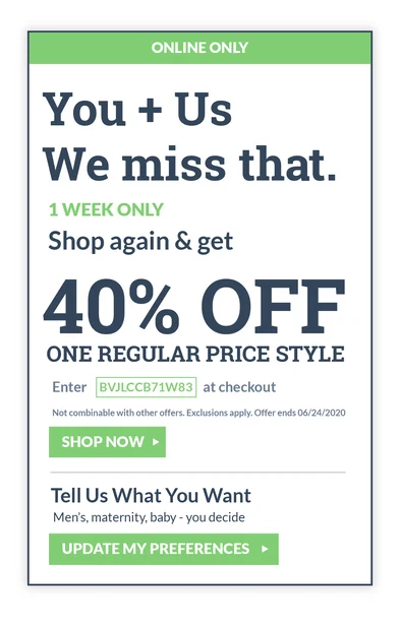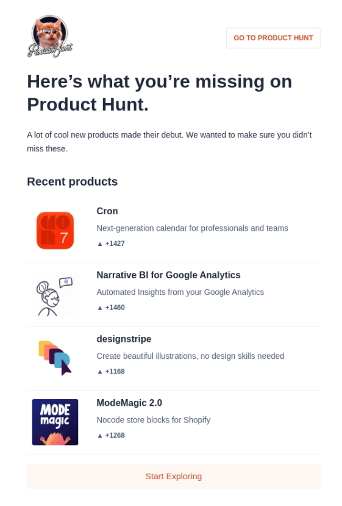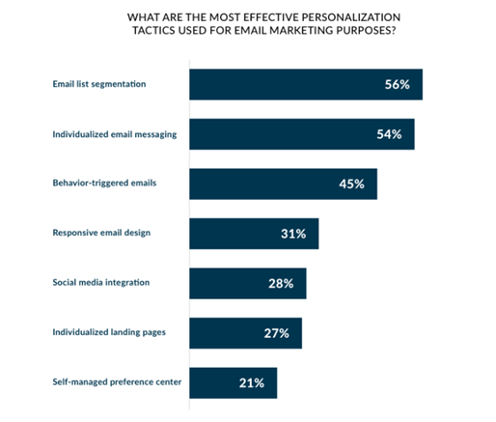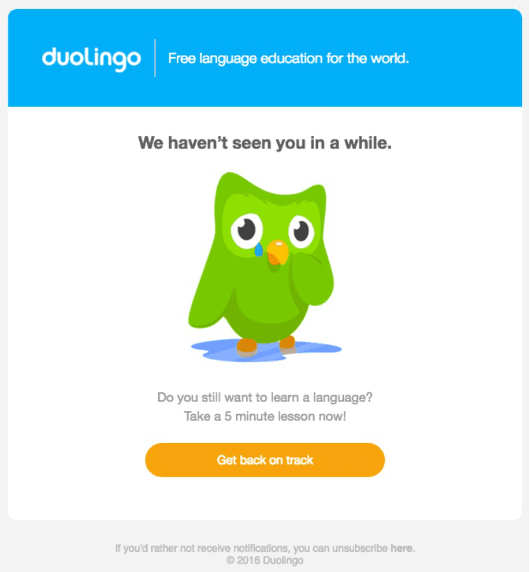Inactive users- Hello or Goodbye? Read the article to know more!
Written by Vanshitha M
Published on Oct 12, 2023
Introduction
It’s always tough to see your audience go MIA and you need to bid them bye! It’s said that 22.5% of users go inactive every year. Are you a brand owner or marketer hoping to know whether worrying about inactive users should be on your bucket list? We’re here to help you navigate this territory!
Inactive audience and its effect:
Inactive audience refers to the customers who haven’t opened or clicked your brand’s emails for an extended period, usually 6 months or more. This has 3 troublesome effects-
a) Reduced open and click rates, ultimately lowering your conversions and revenue.
b) Increase bounce and spam rates: This makes your brand unreliable in the eyes of email algorithms.

Source: Popupsmart.com
c) Increase spending: All the time taken to craft a personalized mail or the budget used to market an email is again time, money (If you are using third-party services for metrics), and human resource wastage.
Identifying inactive audience:
You can always turn back to third-party tools to understand all valuable metrics like click rates, open rates, conversions, content personalization, customer interaction, and behavioral metrics, based on your industry and needs can help you categorize active and inactive users effectively.
Types of inactive users:
- Never-active: Users who never engaged with your emails.
- Lapsed Customer Inactives: The users used to click your emails and make purchases but have since stopped.
- Current customer inactive: Inactive users who were once active customers.
How do you know- Win back or let go?
History: Understanding the user’s conversion rate before they become inactive and comparing the metrics to your industry standards can set the pace of your research. This can serve as a great metric to know the value your brand served!
This can be the RFM (Recency, Frequency, Monetary) Model helping you analyze the segmentation of the consumer base into low-spenders and high-spenders. Understanding the audience can help increase the retention of high spenders and improve campaigns on low spenders. This qualifies the consumer base from 1-5 ensuring to update the marketing analysis.
Recency-How long ago did they make a purchase?
Frequency- How often do they make a purchase?
Monetary- How much do they spend on the products?
What it means to ideate losing your users/ Choosing win-back campaigns:
Losing or gaining back can have various implications. An inactive user can
- Resource drain: Continuously targeting inactive users can drain your resources and lead to significant losses.
- Shift metrics: Metrics hold a high ground in email marketing but inactive users can skew your customization metrics, potentially hindering the creation of new campaigns.
- A study showed that Attracting new users costs 5 times more than generating interest from old users. So, making the right decision is crucial.
When you make a decision:
When it comes to dealing with your inactive audience, you have 2 options: Win them back or bid them farewell. After the decision, consider these strategies:
-
A) Win-back emails:
- You can create a sense of urgency by highlighting your brand’s value with your competitive advantage as USP (Unique Selling Point) and how they fit in each user’s life.
- Incorporate offers or bonuses to entice them back. Creating value is the best strategy you can use in an email. Remember, there are 306 billion emails sent and received each day. Your mail should stand apart!

Source: Pure360.com
- Ask for feedback to understand their preferences and do the needful to improve your approach.
- Provide useful inputs and resources at their disposal to go the extra mile in making a difference.

Source: porchgroupmedia
- Always test A/B mails even before a user goes inactive by testing out various subject lines and CTA (Call to Action) to know what resonates the most with your audience.
- Reinforce the content that made the users subscribe in the first place.
- Sometimes it’s not that users don’t want to engage with your emails, they can forget about your brand, According to Sender follow-up and reminder emails have a conversion rate of 3.1% in 2018 and it jumped to 4.3% in 2020.

Source: porchgroupmedia
Remind them again of the point they loved about your brand and emphasize the pedestal you keep the user on.

Source: ArtofEmails.com

Source: CampaignMonitor
b) Letting them go gracefully:
You can automatically or manually move them off the sender’s list, Move them to a separate list to ensure spending fewer resources on them or Send them an email with a choice to either re-opt in or opt out of your list. 38% of email marketers think that keeping an updated mailing list is the toughest job. Maintaining that clarity can help you filter out useful readers. If nothing attracts you, you can just end the relationship by sending a positive farewell message with a gratitude note leaving a better impression.
Why Retention10?
Conclusion:
Inactive users-whether a hello or a goodbye can be the goldmine of valuable data! This data can be useful to understand your position in the market. Leverage the data to ensure you understand what they liked about your brand what they didn’t and why did they abandon you! At the end of the day, each business varies, the industry they are and the purpose they serve! Inactive users mean 2 different things for every brand. Asses your brand and users to identify the strategy you can execute.

Vanshitha Munipally
( Research & Content Marketer )
To get your customized CRM Master Guide solutions, Do write to us :





Pingback: Your 2024 guide to Google & Yahoo’s new sender Policy – Retention10 CRM Marketing Agency
Pingback: Know your early adopters – Top 10 strategies to increase your early adoptions. – Retention10 CRM Marketing Agency